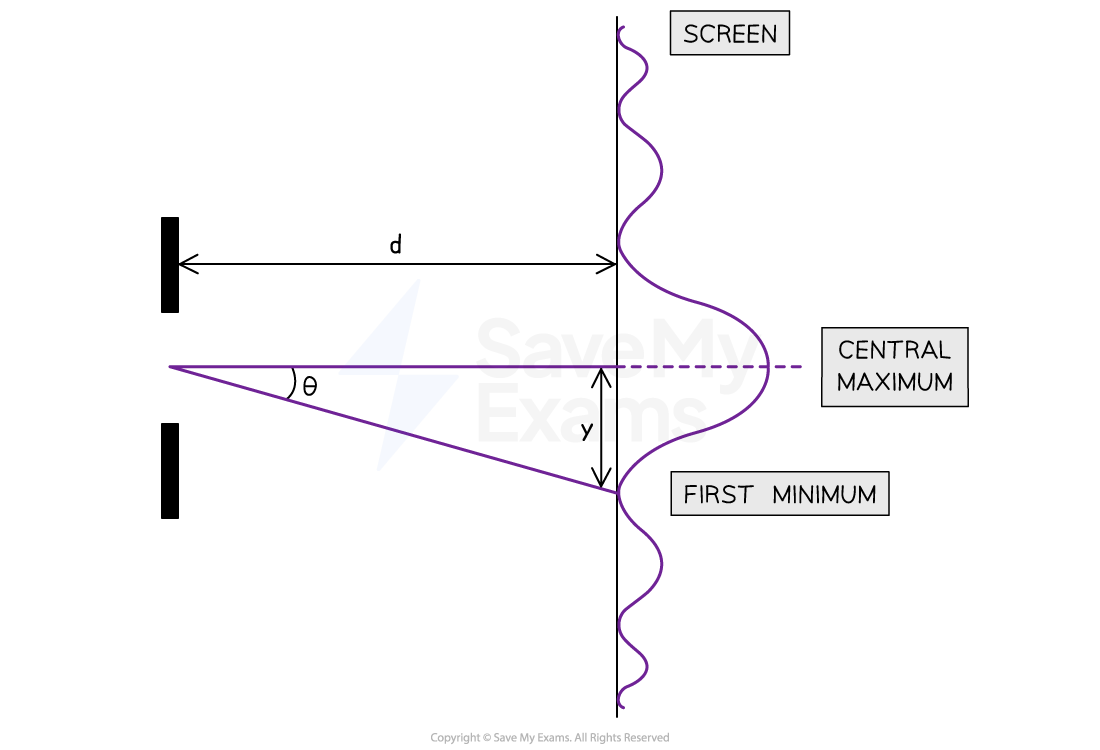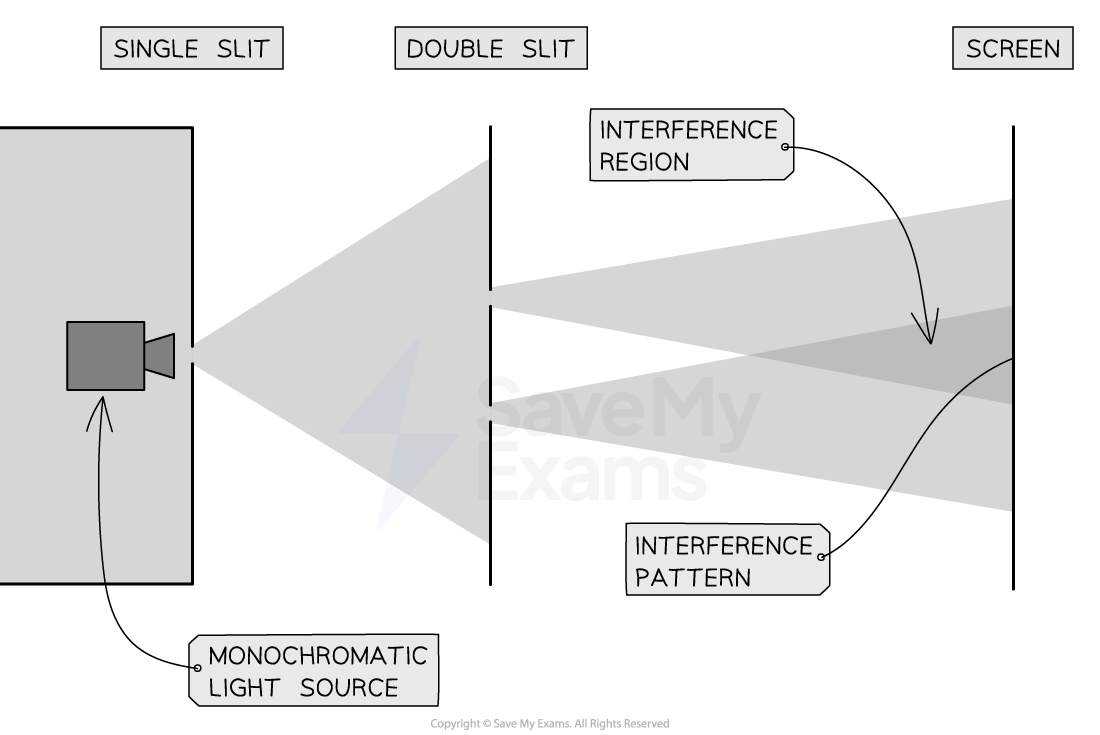Single Slit Intensity Patterns
- The intensity pattern of light can be represented as a series of light and dark fringes which show the areas of maximum and minimum intensity
- If a laser emitting blue light is directed at a single slit, where the slit width is larger than the wavelength of the light, it will spread out as follows:

The intensity pattern of blue laser light diffracted through a single slit
- The features of the single slit diffraction pattern are:
- A central maximum with a high intensity
- Subsidiary maxima equally spaced, successively smaller in intensity and half the width of the central maximum
- The width of the central maximum changes depending on the wavelength of the light
- This is calculated by the equation:
- Where:
- θ = angle between the central maximum and first minimum (°)
- λ = wavelength of incoming light (m)
- b = width of the single slit (m)

Single-slit diffraction
- The angle θ tells us how spread out the diffraction pattern is
- This equation shows us that the pattern is more spread out if:
- The width of the slit is reduced
- The wavelength of the incoming light is increased
- This can also be compared to distances
- Since θ is a very small angle, we can approximate it to:
- Where:
- y = distance between the central maximum and first minimum (m)
- d = distance between single-slit and screen (m)

Single slit diffraction in terms of distances
Different Wavelengths of Light
- The angle of diffraction, θ is directly proportional to the wavelength of the light, λ
- This means that the width of the bright maxima, or fringe, is also proportional to the wavelength
- Red light – which has the longest wavelength of visible light – will produce a diffraction pattern with wide fringes
- Blue light – which has a much shorter wavelength – will produce a diffraction pattern with narrow fringes

Fringe width depends on the wavelength of the light
- Therefore, if the blue laser were to be replaced with a red laser:
- The wavelength of red light is longer so the light would diffract more
- The intensity fringes would therefore be wider

The intensity pattern of red laser light shows longer wavelengths diffract more than shorter blue wavelengths
- If the slit was made narrower:
- The intensity would decrease
- The fringe spacing would be wider
Spectrum for White Light
- If the laser were to be replaced by a non-laser source emitting white light:
- The central maximum would be white
- All maxima would be composed of a spectrum
- The shortest wavelength (violet / blue) would appear nearest to the central maximum
- The longest wavelength (red) would appear furthest from the central maximum
- The colours look blurry and further away from the central maxima the fringe spacing gets so small that the spectra eventually merge without any space between them
- As the maxima move further away from the central maximum the wavelengths of blue colour observed decrease and the wavelengths of red observed increase
- The fringe spacing would be smaller and the non-central maxima would be wider

Qualitative treatment of the variation of the width of the central diffraction maximum with wavelength and slit width
Worked example
Light of wavelength 560 nm is passed through a slit of size 0.030 mm.
Calculate the width of the central maximum formed on a screen 4.0 m away.
Answer:
Step 1: List the known quantities
- Wavelength of light, λ = 560 nm = 560 × 10–9 m
- Wdith of slit, b = 0.030 mm = 0.030 × 10–3 m
- Distance between slit and screen, d = 4.0 m
Step 2: Calculate the angle between central maximum and first minimum
Step 3: Determine an equation for the width of the central maximum
Step 4: Substitute in the values
Step 5: Calculate the width of the central maximum
Width =

Exam Tip
When drawing diffracted waves, take care to keep the wavelength (the distance between each wavefront) constant. It is only the amplitude of the wave that changes when diffracted.
Remember θ is the angle between the central maxima and the first minimum. If you want the angle of the whole central maxima, you then need to double this value!



